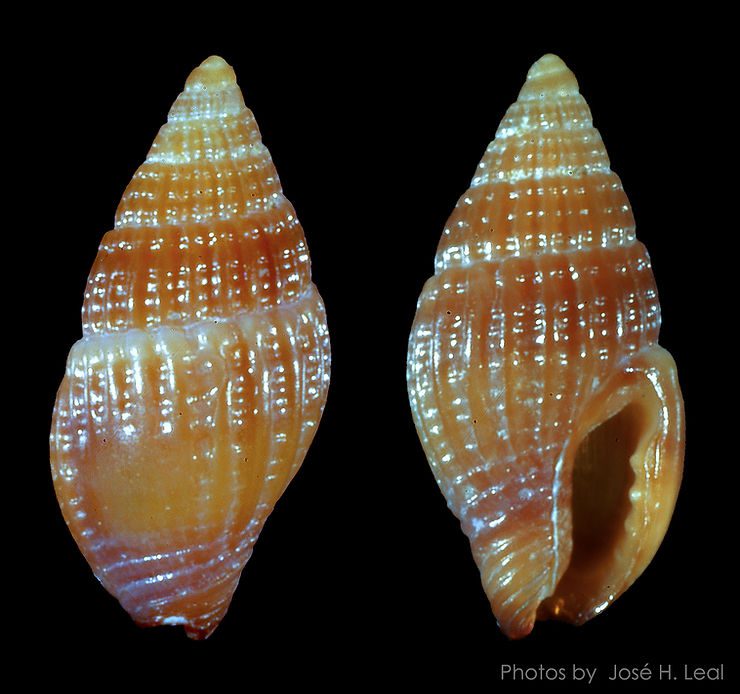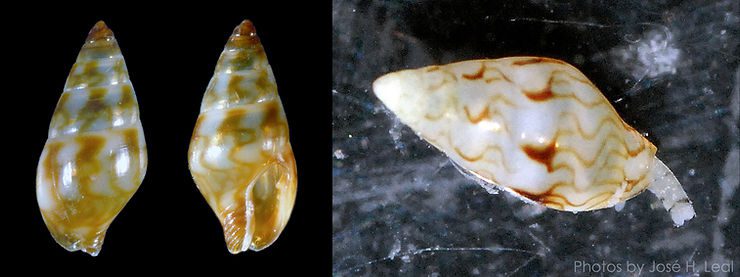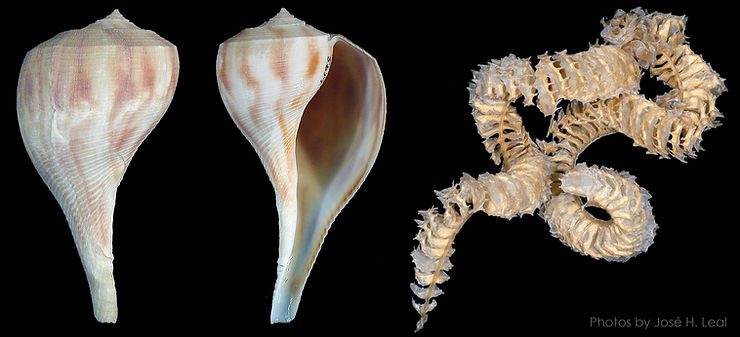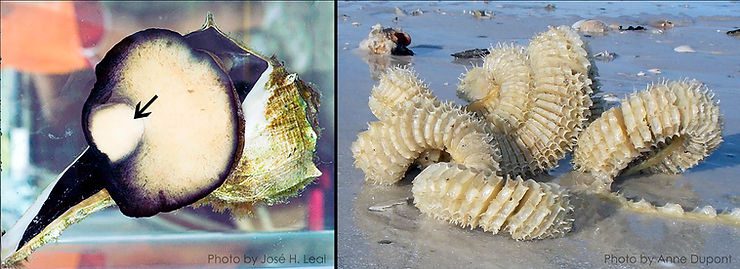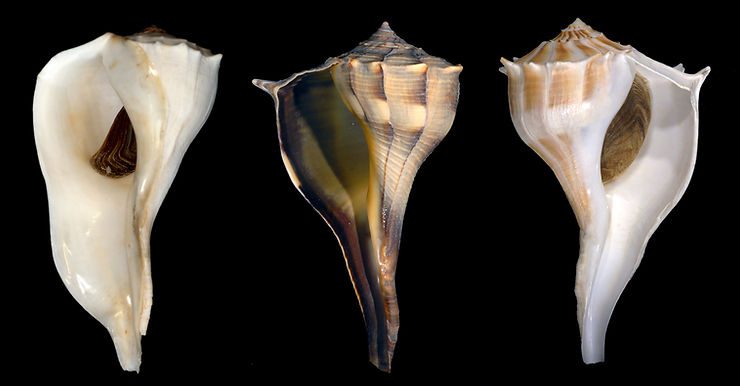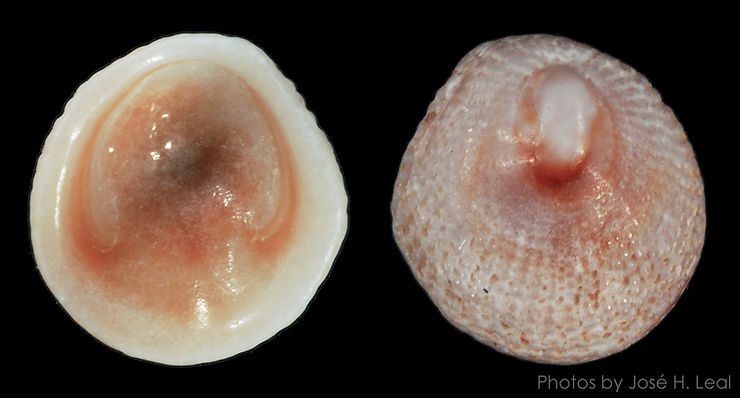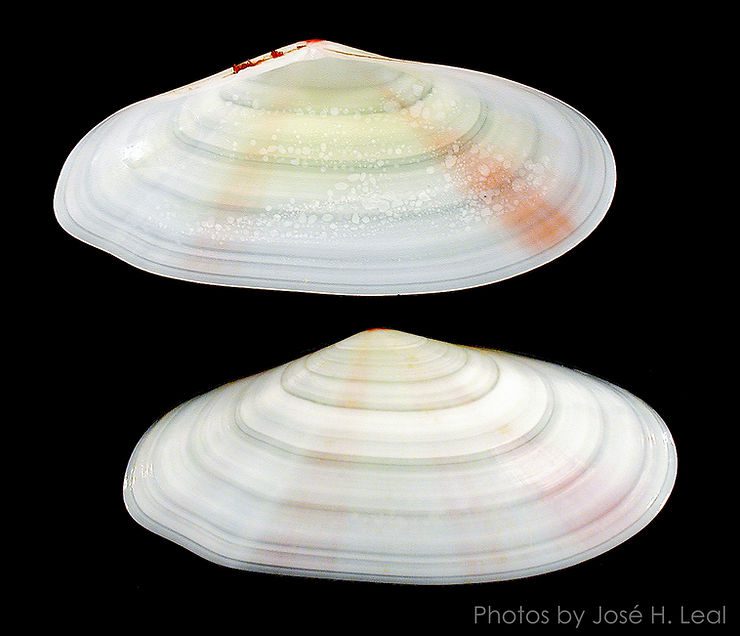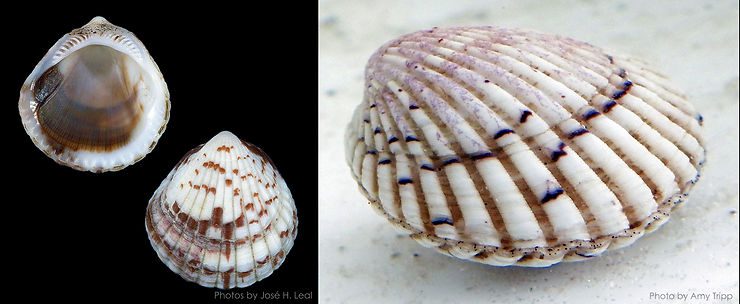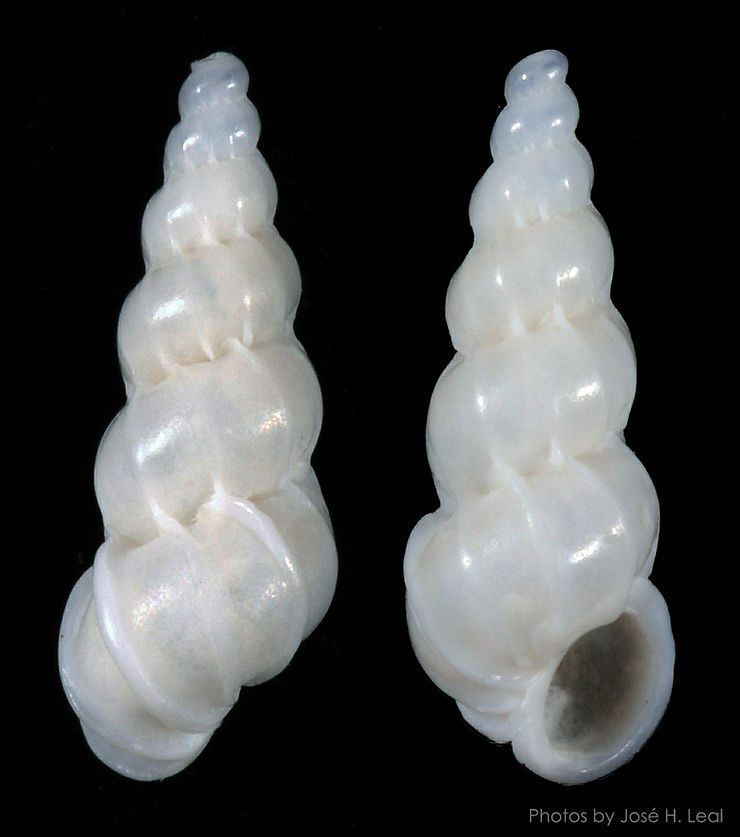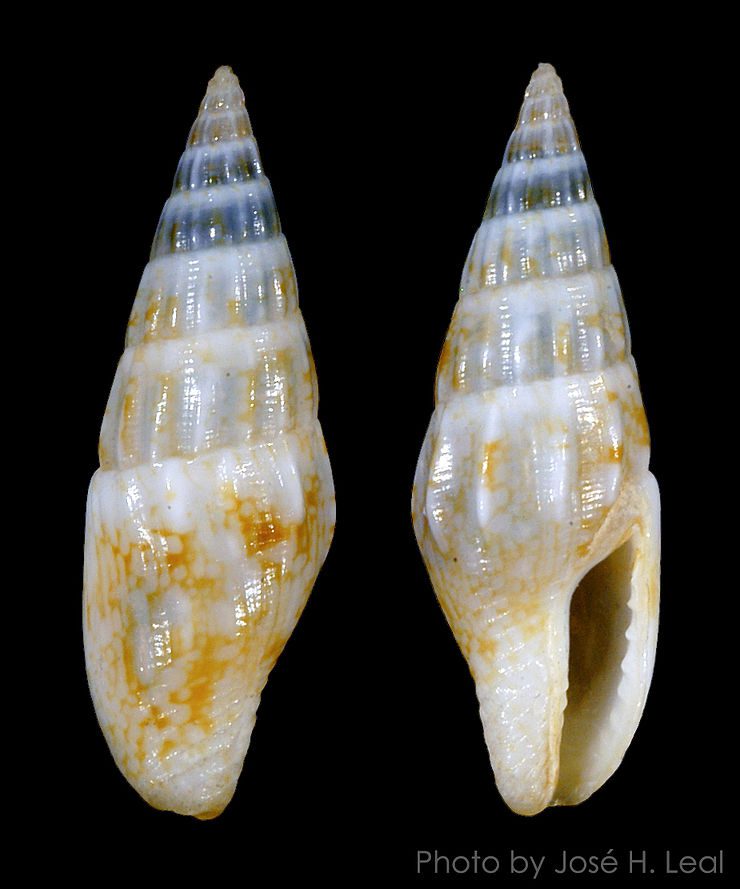
The Gulf Dove Snail
The Gulf Dove Snail, Costoanachis semiplicata (Stearns, 1873), is one of the largest local dove snails (family Columbellidae), reaching about 16 mm (about 0.6 inch). It is also one of the most elegant: its shell is fusiform, slender, with straight sides, with a sculpture of about 12 ribs per shell whorl (one-turn). The shell aperture (opening) is narrow, with denticles (little teeth) on its outer lip. The color is usually light-grayish, or light grayish-brown, with reddish-brown markings. The Gu
